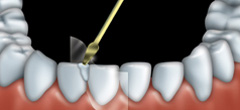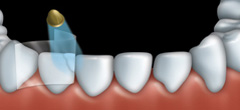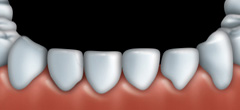Frequently Asked Questions
Bonding (FAQ)
Who does this procedure?
Your dentist may do dental bonding and veneer treatment, or he or she may refer you to a prosthodontist. A prosthodontist is a dentist who has completed a university post-graduate specialty program in prosthodontics. Prosthodontics is a specialty of dentistry that deals with restoring and replacing natural teeth and tissues with artificial substitutes.
What is bonding?
Bonding, also known as bonded restoration, is a painless way to make minor repairs to teeth. In most cases, several teeth can be bonded in one dental visit. Bonding uses tooth-coloured material, called composite resin. Composite resin is put on the tooth, then shaped and hardened with light. The composite resin can be:
– Matched to your teeth.
– Shaped to look like the missing part of a chipped tooth.
– Used to build up teeth and fill between them.
– Used on a broken tooth to restore it to size.
– Painted over a stained tooth to make it match the colour of your other teeth.
How bonding is done
Your dentist places a matrix between the tooth being treated and its neighboring tooth. A matrix is a thin, clear plastic film that protects other teeth from stray composite resin.
Your dentist then puts a mild chemical on the tooth to make it a little rough. This helps the composite resin to bond or stick to the enamel of your tooth. The composite resin that matches the colour of your natural teeth is chosen so that the bonding blends in with your teeth. Your dentist puts the composite resin on your tooth in layers. A light is used to harden each layer of the composite resin. After the last layer of composite resin is hardened, your dentist shapes and polishes it to form your tooth. The finished tooth looks natural and smooth. At your next dental visit, your dentist will examine the bonding and polish it if needed. Over time, the bonding may wear down and your dentist may touch up the bonding with more composite resin.
Dental bonding can be used to fix teeth that are chipped.

A clear plastic is placed between the tooth being treated and its neighbouring tooth. Composite resin is put on the tooth in layers.

Each layer of the composite resin is shaped and then hardened with a light.

The finished tooth looks natural and smooth.
Comments are closed


